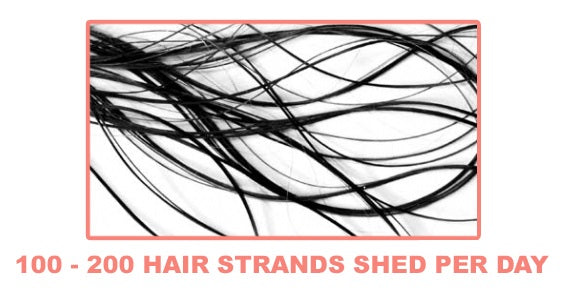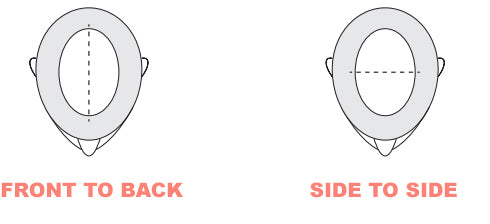Hair Loss Guide
The Wig CompanyHair loss can be stressful and emotional. Whether you are just starting to experience hair loss, or are in a more advanced stage, we can help you find a hair loss solution that is best for your individual needs. Consider wearing a hairpiece or topper if you have a more localized type of hair loss. Check out the Transformations Collection by HairUWear, with solutions for women with hair loss featuring hairpieces by Gabor, Hairdo and Raquel Welch. The Hair Icing Collection, also has a variety of hairpieces (and clip on pony’s) for any stage of hair loss.
Facts about Women and Hair Loss
Hair loss among women is more common than you might think. According to the American Hair Loss Association, women make up 40 percent of hair loss sufferers. If you notice that you have less hair than you used to, you should know you’re not alone. The fact is, 1 in 4 women experience some form of hair loss.

On average, a person will shed between 100 and 200 hair follicles a day. For those with normal hair growth, these follicles are replaced by other hair follicles entering the growth phase. Here’s how it works: Hair grows about a half-inch each month from its follicle. Each individual hair will grow for two to six years, rest, fall out, then new hair will grow in its place. Unfortunately, sometimes, when a hair falls out, a new hair does not grow.

You may think hair thinning only affects older women, or women going through menopause. The truth is, hair thinning can start as early as in your teens and 20s. In general, as you age, the rate at which your hair grows begins to slow down.
Causes of Hair Loss
Hair loss can happen at any age, for a number of reasons. Some types of hair loss, such as those caused by extreme stress, are temporary and eventually, your hair will grow back by itself. Another common cause for hair loss in women is pregnancy. Other reasons can include a change in hormones, improper diet, medical illness, and even some cosmetic procedures such as hair perms or excessive bleaching/coloring.
Alopecia Areata, an autoimmune skin disease that causes hair loss on the scalp, face and sometimes on other areas of the body, is another form of hair loss, where the immune system mistakes the normal cells in the body as foreign invaders and attacks these cells. It is unknown exactly what “triggers” the immune system to attack healthy hair follicles when people have alopecia areata, or even if these triggers first happen inside the body (from a virus or bacteria), outside the body (from something in your surroundings) or if it’s a combination of both. There are various types of alopecia areata. The most common form is known as alopecia areata patchy — where there are one or more coin-sized hairless patches on the scalp or other areas of the body. Alopecia totals is another form, where there is total loss of hair on the scalp. With alopecia areata, your hair follicles remain alive and hair can regrow at any time.

Female pattern hair loss, which is characterized by thinning hair on the top and crown of the head, affects more than 3 million women in the U.S. This thinning in women often starts as a widening of the center hair part that leaves the front hairline unaffected. While female pattern hair loss is permanent, the extent of the hair loss is usually mild to moderate.
What to Look For
Look for common visual cues that might help determine if you’re beginning to lose more hair than usual. Some things to look for include excess hair loss when brushing or washing your hair (you might see extra strands of hair with the root attached in your hair brush), large amounts of hair on your pillow or in the shower drain, a center part that’s wider than usual, or a more visible scalp when your hair is pulled back.
Hair Loss Solutions
Identifying the health of your hair as well as its growth pattern is an important step in determining what type of coverage is best for you. Begin by examining the extent of your hair loss in 3 steps.
STEP 1: IDENTIFY THE STAGE OF HAIR LOSS
Using the guide below, identify the stage that most closely resembles your hair.

STEP 2: ASSESS THE AREA OF HAIR LOSS
Using the guide below, identify the area on your head where you are experiencing hair loss.

STEP 3: MEASURE THE AREA OF HAIR LOSS
Measure the area where you are experiencing hair loss by taking 2 measurements: front to back and side to side. This is an important step, because you want to be sure that you have enough hair to attach the clips to. You will want to take note of the base dimension of each product as you consider what hairpiece or topper is best for you.

We know hair loss can be both stressful and emotional. We have a variety of hairpieces, toppers and wigs, each designed specifically for various stages and areas of hair loss. Consider wearing a hairpiece or topper if you have a more localized type of hair loss. If you’re experiencing a more extensive type of hair loss, you might want to consider wearing a full wig. You can browse our entire wig collection here.
Need help selecting your best color? The Wig Company makes it easy with our FREE Color Matching Service. Simply send us a hair sample of the color you wish to match. Our experienced color specialists will examine your sample under professional lighting and provide you with an accurate color assessment to ensure the precise matching you expect. In addition, you can also request color swatches through our FREE Color Swatch Service. This way you can see exactly what the colors look and feel like before you buy.

